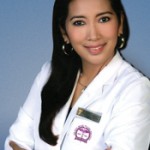
SUV Dental Service
Sleep apnea is a sleep disorder characterized by abnormal pauses in breathing or instances of abnormally low breathing, during sleep. Each pause in breathing, called an apnea, can last from a few seconds to minutes, and may occur 5 to 30 times or more an hour. Similarly, each abnormally low breathing event is called a hypopnea. Sleep apnea is diagnosed with an overnight sleep test called a polysomnogram, or “sleep study”.
There are three forms of sleep apnea: central (CSA), obstructive (OSA), and complex or mixed sleep apnea (i.e., a combination of central and obstructive) constituting 0.4%, 84% and 15% of cases respectively.[2] In CSA, breathing is interrupted by a lack of respiratory effort; in OSA, breathing is interrupted by a physical block to airflow despite respiratory effort, and snoring is common.
Regardless of type, an individual with sleep apnea is rarely aware of having difficulty breathing, even upon awakening.[3] Sleep apnea is recognized as a problem by others witnessing the individual during episodes or is suspected because of its effects on the body (sequelae). Symptoms may be present for years (or even decades) without identification, during which time the sufferer may become conditioned to the daytime sleepiness and fatigue associated with significant levels of sleep disturbance.
Sleep Apnea Signs and Symptoms
Although you may be aware that your sleep is disturbed, more likely your symptoms will be noticed first by family members. The two most commonly identified sleep apnea symptoms are:
- Gasping for air or choking during sleep.
- Loud snoring.
The inability to breathe properly often results in sudden awakenings throughout the night that interrupt your sleep and prevent you from feeling refreshed throughout the day. As a result, you might find yourself struggling to stay awake during the day or feeling irritable and depressed. Other signs that you may be experiencing sleep apnea include:
- Painful and inexplicable headaches in the morning.
- Waking up with a sore throat or dry mouth.
- Memory problems and difficulty concentrating.
- Urinating frequently throughout the night.
Sleep Apnea Treatments
Do sleep apnea dental devices really work?
Do you have a list of all appliances that are available?
Types of sleep apnea dental appliances
Currently, over 80 different types of sleep apnea dental devices for snoring and sleep apnea are available to specially trained dentists to treat sleep disordered breathing. At first glance, this number appears overwhelming but on close examination each of the appliances falls basically into one of two categories and the diverse variety is simply a variation of a few major themes. Oral appliances can be classified by mode of action or design variation.
Tongue Retaining Appliances. There are very few tongue retaining devices available, but they have been well studied and shown to be effective in many patients. Tongue retainers function by directly holding the tongue in a forward position by means of a suction bulb that holds the tongue. When the tongue is in a forward position, the back of the tongue does not collapse during sleep and obstruct the airway in the throat.
Mandibular Repositioning Dental Appliances. Mandibular repositioning appliances are by far the most numerous type on the market. They all function to reposition and maintain the lower jaw (mandible) in a protruded position during sleep. It is felt that this serves to open the airway by indirectly pulling the tongue forward since the tongue is attached to the lower jaw, by stimulating activity of the muscles in the tongue and making it more rigid, and by holding the lower jaw and other structures in a stable position to prevent opening of the mouth.
The Snoring and Sleep Apnea Dentists. The dentists associated with Snoring Isn’t Sexy® provide oral appliance therapy for both snoring and obstructive sleep apnea and work with your physician for optimum treatment results.
Oral Appliances are placed in the mouth and are worn much like an orthodontic appliance or sports mouth protector. They are worn during sleep to prevent the collapse of the tongue and soft tissues in the back of the throat so that the airway stays open during sleep. The appliances promote adequate air intake and help to provide normal sleep in people who snore and have sleep apnea. Oral appliances can be used alone or in conjunction with other means of therapy such as continuous positive air pressure (CPAP). Determination of proper therapy can only be made by joint consultation of your sleep apnea dentist and sleep physician.
The tongue is held in the suction bulb that protrudes from between the teeth on this cast.
Thin shells are placed over the upper and lower teeth and a device is incorporated that will pull the lower jaw forward as necessary to open the airway.
